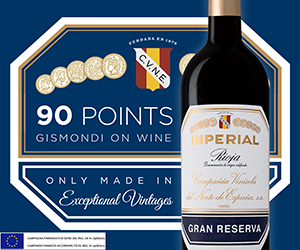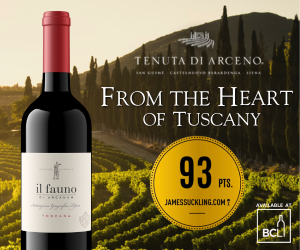How will your restaurant survive another year in Vancouver?

Here's an idea: Why not create a wine list that attracts customers instead of driving them away?
Before you go listing every wine your customers have never heard of to build a look-what-I have-that-my-competitors-do-not wine list, stop. And before you decide to pay for your new car lease by tripling the price of my favourite New Zealand Pinot Noir, stop. And before you put the price of that lamb osso buco down $2 and add $10 to my Cotes du Rhone red, stop. And, perhaps most importantly of all, stop letting a distributor buy or design your wine list, because, after all what, if any, incentive does a supplier have to build a balanced, attractive wine list containing wines that he or she doesn't represent?
I have often wondered why owners and chefs will not let anyone design their food menus or choose their food suppliers, but they will hand over the only part of the restaurant that makes any real money to a wine distributor or a multinational wine giant, and say "Here, you make it work."
There are liquor regulations that prevent people from simply throwing money, free trips or gear at the person responsible for the list but experience would suggest the regulations are impossible to enforce. Large wineries and/or distributors have a lot of room to manoeuvre in the murky back-rooms of wine-list selections, but that doesn't particularly bother me until I look at the list and can't find a single bottle at a price that matches the food, decor and my budget. Am I the only guy who knows I'm paying way too much for wine in restaurants, or have the rest of you just given up? When a winery is getting less than $10 to grow, make, market and ship a bottle of wine to Canada, should I really have to pay $50 to $70 or more to enjoy it with my meal in a restaurant?
Restaurants tend to play the tax card when it comes to pricing, but when they create a chicken or fish dish in which they use resources and add value, the price is almost always moderate -- they wouldn't dare add an extra $10 to the menu because customers would complain. Then they take an ordinary $28 Chablis and sell it for $65 and the world is right.
Given the massive restructuring going on in the wine business, may we suggest restaurants demolish the tired model of the last century and start over. Vancouver has become a cutting-edge food and wine market, so isn't it time we figured out a better way to build a wine list?
Since talk is cheap, here are six wines that could change the way people think about the food-and-wine experience in your restaurant. Just listing these wines will improve your list, and should you and your staff taste the wines regularly and decide which menu items pair well with them, my guess is the sky is the limit for success.
We begin with Fat Bastard Shiraz 2008 from the Languedoc region in the South of France. The appellation is romantic and the shiraz variety remains popular. Add its juicy palate, with blackberry, smoky, resin, meaty, savoury, spicy, tobacco flavours and you have a winner. Price it at $33 and watch it fly out the door.
A solid Italian pick would be the Tommasi Valpolicella Classico Superiore 2009. There's comfort and familiarity in the Valpolicella name and Tommasi delivers, with a traditional mix of corvina Veronese, rondinella and molinara grapes. Expect a silky smooth, ripe, rich entry with floral red fruit notes and a touch of leather and earth. The palate is soft yet dense with juicy cherry flavours. Ready to drink with meaty pasta or casserole fare. How about $35 on the list?
Any recession that prices La Crema Chardonnay 2008 at $27 is okay with me. This Sonoma Coast white should be a California cornerstone on most small wine lists. The style is ripe, round and elegant with a touch of fat on the palate. The flavours are a mix of buttery, leesy, nutty, citrus, baked apple and pineapple. A crowd pleaser if you can move it for less than $49.
You have to have a crazy value red and that's San Pedro 35 South Shiraz Reserva 2009 from Chile. Soft, fresh, round, dry palate with black cherry, licorice, peppery, blueberry, smoky, gamy, savoury flavours. This will be gone before you can get the food on the table. Price it at $28 and sell two for dinner.
What, I can order well-made Chablis from a top vintage for $50 on a wine list? Only if you are selling Jean-Marc Brocard Chablis Domaine Sainte Claire 2008. So dry, crisp and juicy, this elegant, slightly lean white with seaweed, pear, lees, lemon and mineral flavours is a fish lover. Will keep for years and improve under screw cap.
The Norton Cabernet Sauvignon Reserva 2006 solves your "I need a cabernet" problem. Argentina is hot, and the cabernet may be more interesting than the malbec. The palate is warm and soft with peppery licorice red fruit flavours and just a dash of tannin. Perfect for simply grilled meat dishes. It too will fly off the list at $35.
Fat Bastard Shiraz 2008, Languedoc, France
Price: $17
UPC: 3700067800717 Score: 87/100
Remarks: Fine fruit and balance for grilled meats and tomato sauces. Solid value.
Tommasi Valpolicella Classico Superiore 2009, Pedemonte Valpolicella, Veneto, Italy
Price: $19
UPC: 8004645304105
Score: 88/100
Remarks: Floral red fruit notes with juicy cherry floral fruit. Ready to drink.
La Crema Chardonnay 2008, Sonoma Coast, Sonoma County, California
Price: $27
UPC: 049331002222
Score: 88/100
Remarks: Ripe baked apple, pear and honey notes.
San Pedro 35 South Shiraz Reserva 2009, Chile
Price: $14
UPC: 007804300123321
Score: 87/100
Remarks: Meaty, spicy, blueberry, black cherry, peppery, licorice flavours.
Jean-Marc Brocard Chablis Domaine Sainte Claire 2008, Burgundy, France
Price: $27
UPC: 003436804100412
Score: 88/100
Remarks: Seaweed, pear, lees, lemon, mineral flavours. Fine vintage.
Norton Cabernet Sauvignon Reserva 2006, Lujan de Cuyo, Mendoza, Argentina
Price: $18
UPC: 007792319678003
Score: 87/100
Remarks: Soft with peppery red licorice fruit flavours.

 quicksearch
quicksearch





